Fall is my favorite time of year for crappie fishing. It’s when the fish congregate the most, are the easiest to find and are both hungry and aggressive. It’s often the time when I find the MOST trophy fish. Don’t get me wrong, the early ice bite is hot too, but it can be a lot more taxing drilling holes to find big crappie than simply driving my Polar Kraft around to locate them.
I feel strongly about putting in the work right now that I have put together a complete fall crappie fishing guide. Not only will we cover the best tips for making the most out of your fall, but also why it’s important to find these spots for early ice too.
Steps to finding fall crappie include:
- Doing your lake research
- Looking for fish in between weeds and basins
- Trusting Your Electronics to Identify these fihs and positioning yourself on them
- Using lightweight gear/lures
- Being ready to move with the school of fish
Gear used for this article (use code nicole15 at lurenet.com to stock up at a discount):
- St Croix Panfish Series LF or ULF
- Pflüeger Trion SP20
- 4 lb Mono
- Lead Jigs (Crappie Mo Glo Jigs specifically)
- Tungsten Jigs (Tungsten Toad)
- Lead Jigs (Marabou Hair Jigs, Crappie Pro Mo Glow)
Any lead or Tungsten jigs bought at Lurenet using the code nicole15 help support this website.
Step 1: Find Crappie Fishing Survey/Reports First
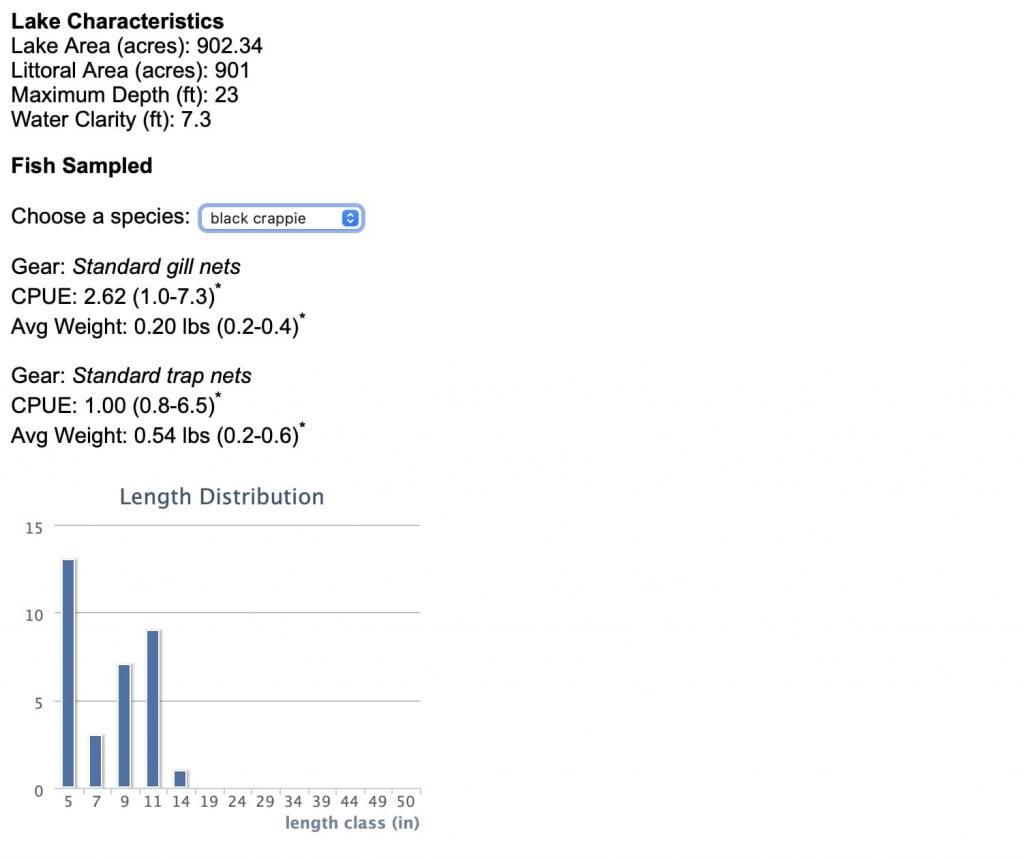
I reside in Minnesota so the Minnesota Lake Finder website is the perfect place for me to check the stats when finding new lakes for crappie fishing. Here I look at the lake breakdown and analyze the survey reports. This at least gives me lakes to choose from that I KNOW have a healthy crappie population before committing to a trip. I also look for lakes that are manageable. My definition of manageable means lakes that are 1,000 acres or less in size, allowing me to check all of the most promising areas where the fish are likely to reside.
Other fishery survey reports include:
- Minnesota Survey Report
- North Dakota Survey Report
- South Dakota Survey Report
- Iowa Survey Report
- Wisconsin Survey Report
Step 2: Look For Transitions into Deep Water
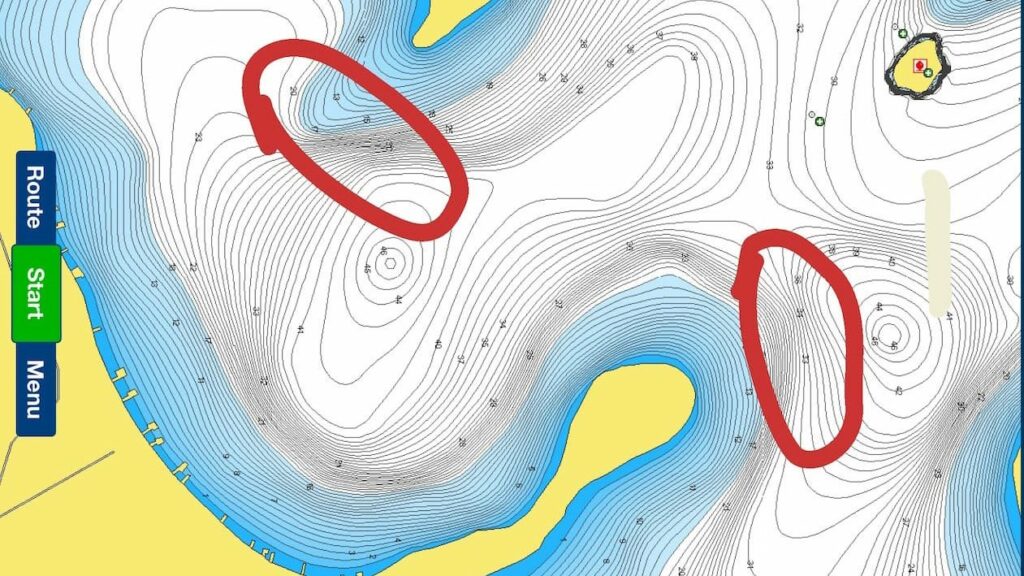
In the spring I find them shallow, in the summer they are often in the weeds, and in the fall they start to congregate into the deeps – making them so much easier to target and find! Earlier in the fall, the key is to look for transition areas. These areas consist of weedy shallow structures that quickly transitions to the deeps. I like to look for bowls or the basin – deep areas surrounded by shallow water. I will go to each of these areas checking for fish over and over again. When I see them I fish them.
Later fall I will go even DEEPER into the basis. Often times I will find them suspended deep in 30 + feet. Frequently these fish hangout here during early ice as well.
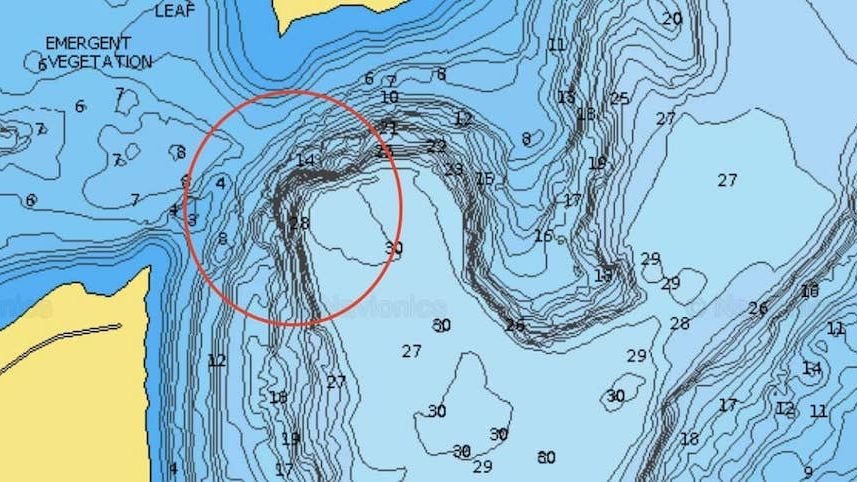
Step 3: Use Your Electronics For Fall Crappie Fishing
If you have any electronics at all, even 2D sonar, you can find crappie pretty easily this time of year. The key is to look for suspended marks in the locations we talked about above. In many Northern and Central Minnesota Lakes, these types of marks are a giveaway for bluegill or crappie. The biggest difference when identifying the two is the spacing and size of the marks. Crappie marks tend to be larger and more spaced out (when moving slowly).
If you are fortunate enough to have any electronics, the best thing you can do is rely on them. No marks? Don’t fish there. See suspended marks? It’s probably what you are looking for. Fish for what you find on electronics.
It’s not as simple in the spring and summer when fish can be extremely shallow or in the weeds. That’s why it’s important to take advantage of fall, when fish are suspended in big schools in the deep.
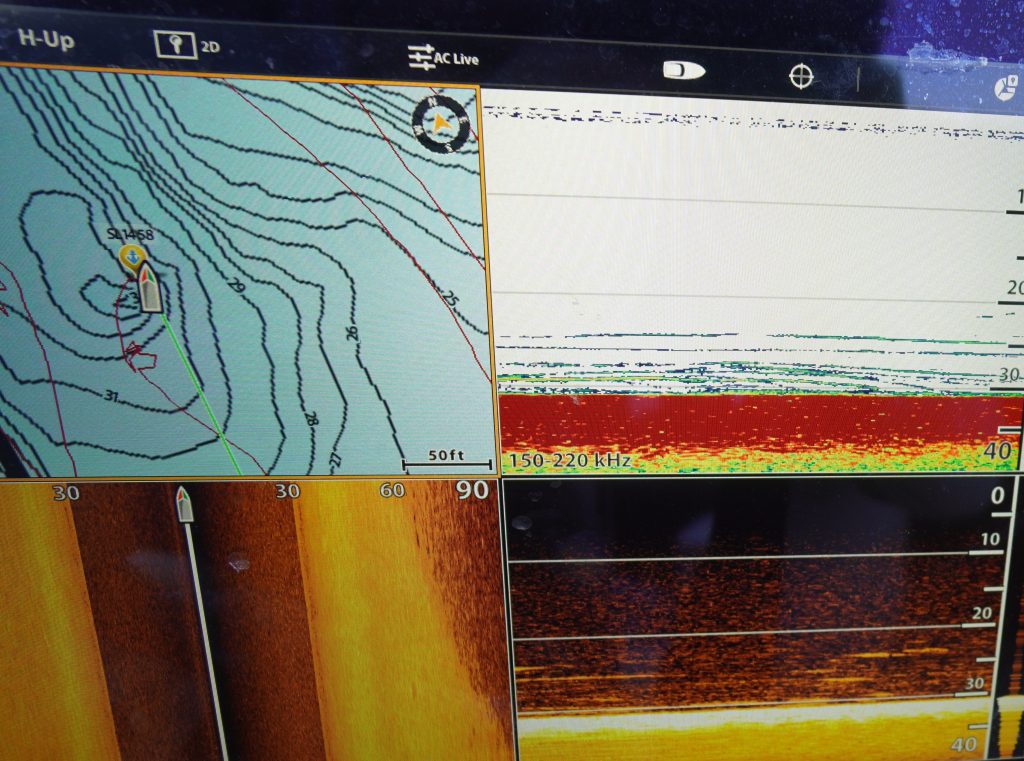
Identifying fall crappie on 2D sonar
Each piece of technology is going to have a different pattern. When identifying crappie on sonar you simply need to look for suspended lines. 2D sonar (the most basic and affordable of sonar technology) will get the job done just fine. Crappie is typically suspended and in bigger pods, as pictured in the top right image. When you see those types of marks be sure to drop your jig down.
Identifying Fall Crappie on Down Imaging
Down imaging (DI) takes things to the next level by giving you a higher resolution image. It’s really going to give you an edge on identifying fish quality. On DI, marks will be larger and more spaced out as you can see in the image on the bottom right. In some instances, they can be really pronounced, helping confirm the fact that the fish are big and active.
Identifying Crappie on Livescope
I recently purchased the Garmin Livescope and WOW. Garmin Livescope is by far the easiest platform to identify fish on. Not only do clearer images of the suspended marks make for a dead giveaway on fish type, but you literally see where they are going and how they are responding.
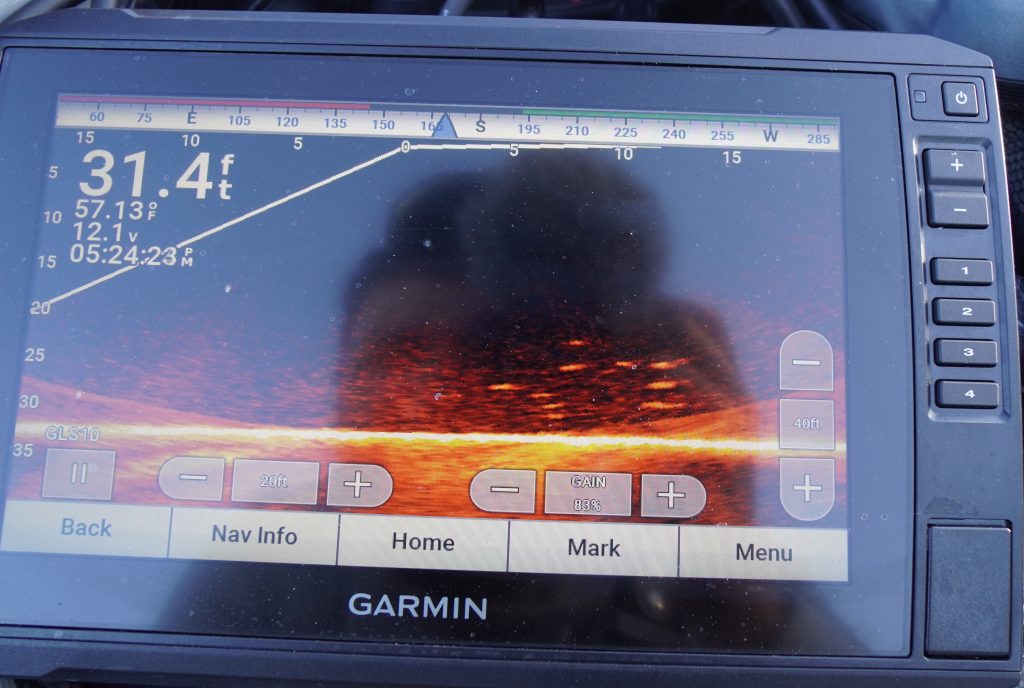
Step 3: Make Sure You Use Light Gear
Next, let’s talk about gear. My favorite open water crappie gear can be defined by “ultralight”. I like light rods, reels, lines, and jigs. Below I list out my favorite fall crappie gear and why I choose it.
- Rod: St Croix Panfish Series LF OR St Croix Panfish Series ULF
Lightweight setups are everything when you are trying to throw light baits. It also matters when you are are trying to detect the lightest bites. Get a couple rods with plenty of flex to handle these baits and you’ll be in great shape in the fall.
2. Reel (Pflueger Trion SP-20): Anything that can handle a 2lb – 4lb test can do the trick. You can find this printed on the reel itself. Anything other than that is a personal preference. I use a Pflueger Trion SP20 I picked up from a retailer that maybe cost me $50.
3. Line (4lb mono): The only time I like mono? When I’m fishing for panfish. I do really like the stretch. It definitely seems advantageous when it comes to hooksets and fish detecting the lines.
Step 4: Light Jigs & Soft Hooksets
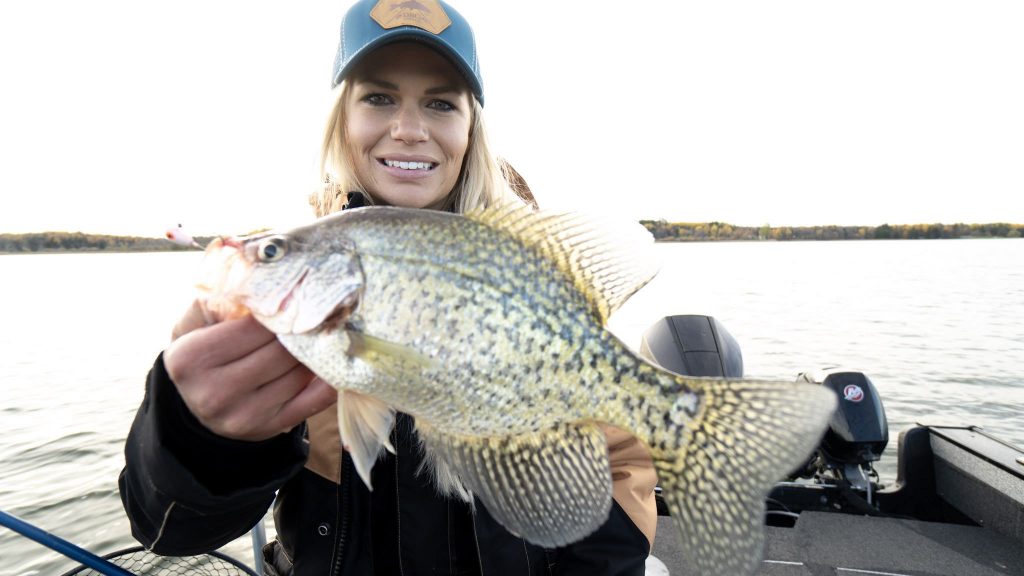
Again, I can’t emphasize enough that in most crappie fishing situations, you can’t go wrong with lightweight tackle. Heavier marabou jigs and spoons can work at times, especially in warm weather months, but I still find the best way to guarantee success is to rely on light jigs. Even if you are on a smaller pod of crappie that aren’t overly competitive, you can manage to pick off a few with a more finesse presentation and focusing on the slow fall rate.
I use a mix of jigs, and always keep my finesse ice gear with. My go-to lures include:
- Lindy Tungsten Toad (nicole15 for 15% off)
- Kalins Marabou Jigs
- Mo Glo Crappie Pro (super slow falling, lightweight (nicole15 for 15% off))
- Johnson Crappie Buster Spin’r Grub
Another heads up? Take it easy on those hooksets. Aggressive jigging and hooksets don’t go as far in crappie fishing as they do with other species. Instead focus on still and finesse presentations, and when you set the hook… go very light during open water. There is a lot of leverage on a longer open water rod than compared to ice season.
Step 5: Keep Moving to Stay on the Fish
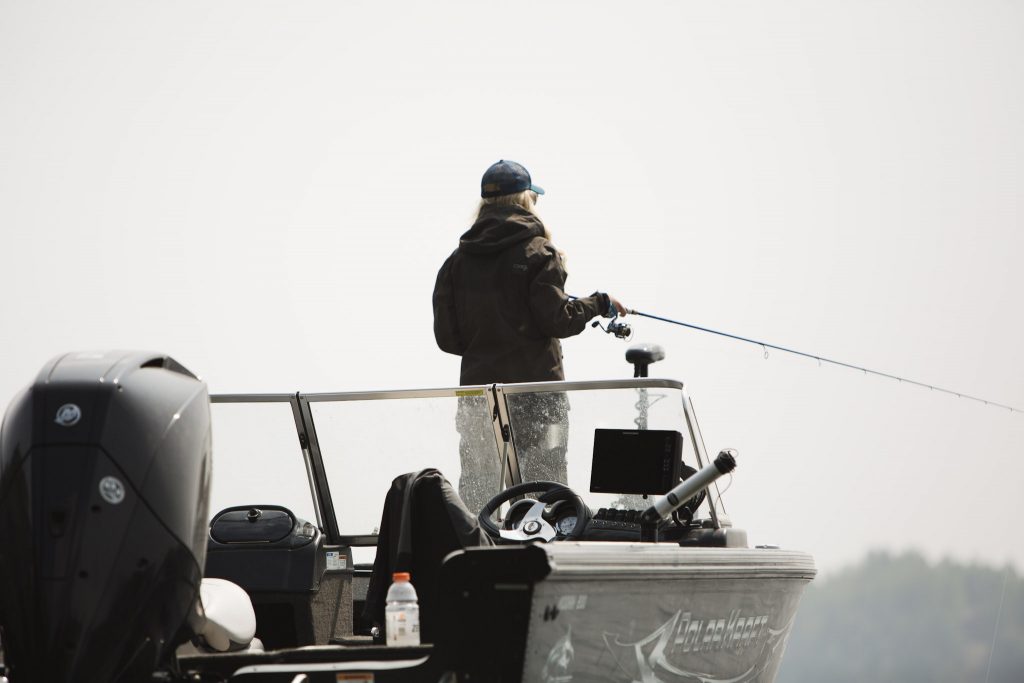
Crappie are constantly moving. That’s why the best thing you can do is have your trolling motor down and remote in hand to stay on them. You will be constantly adjusting your location. This is where Garmin Livescope and side imaging can save you some time. However, you don’t NEED either. If you don’t have the setup just keep adjusting until you see the school again. They usually don’t move far, just consistently.
Also, be sure tao check out my late ice crappie guide and spring crappie guide to help you catch more fish in all seasons.
Final Crappie Fishing Tips
Targeting fish in the fall, especially as we shift into turnover, is perfect. Mostly because you will be able to use these same spots for early ice and as I said in the beginning – it is SO MUCH easier to find them now. So any of the work you put in now will pay you back then. In the end the keys to success are:
- Finding manageable lakes with a crappie population
- Finding transition areas to deep water
- Look for suspended marks on sonar
- Using lightweight jigs and slow consistent techniques
- Keep moving to stay on the school




